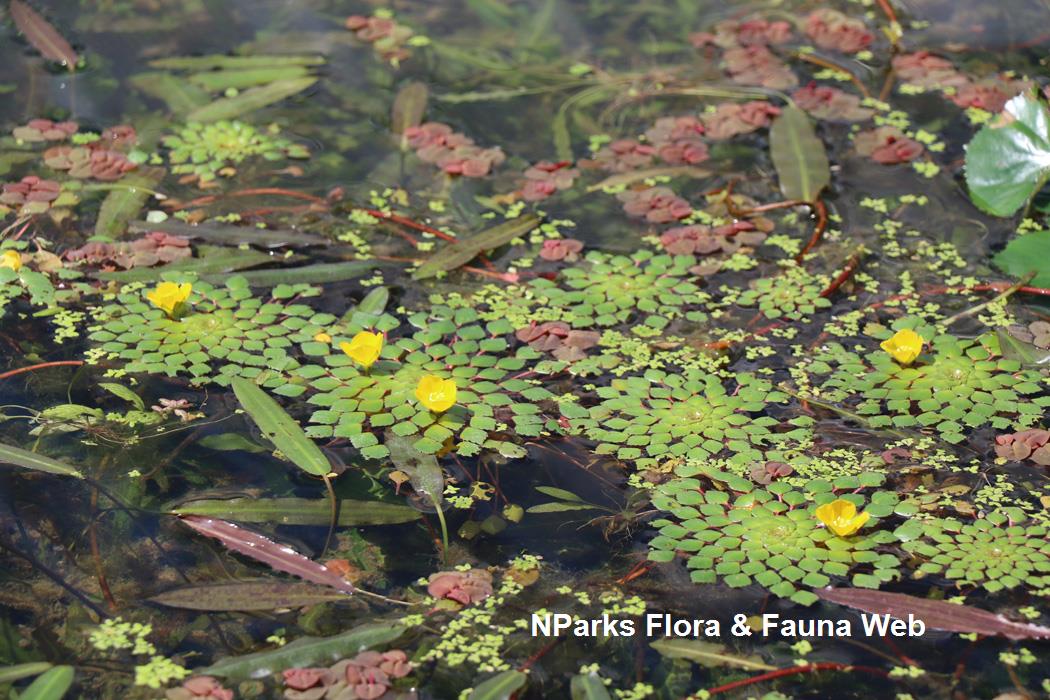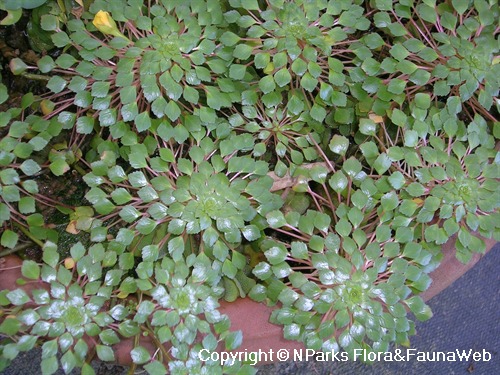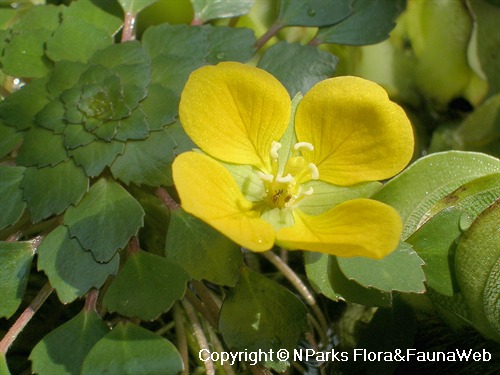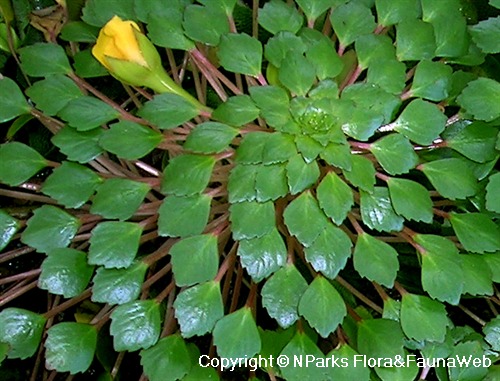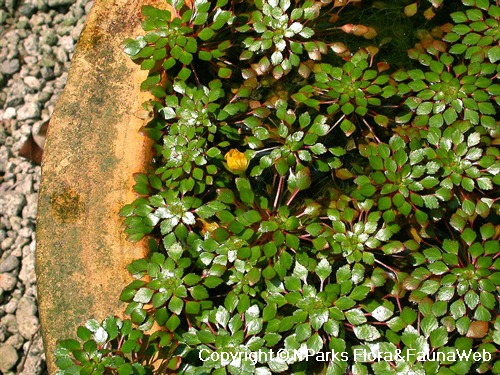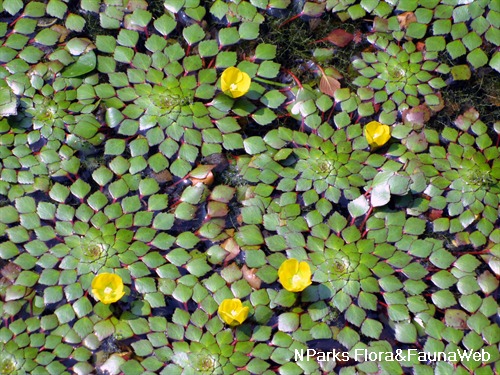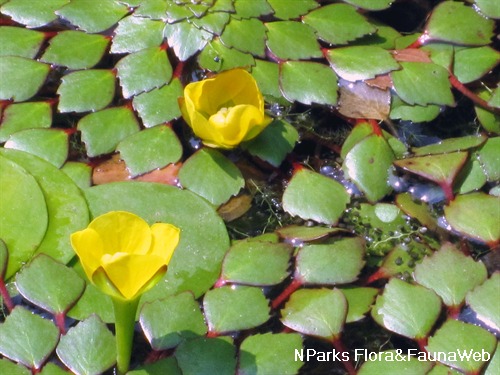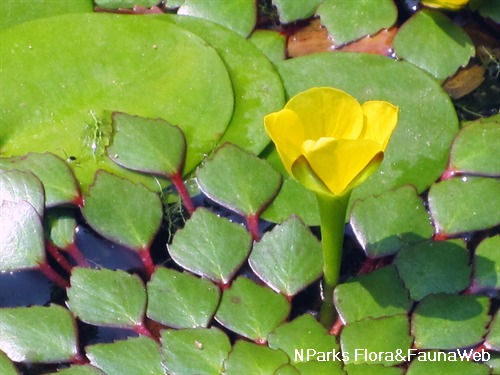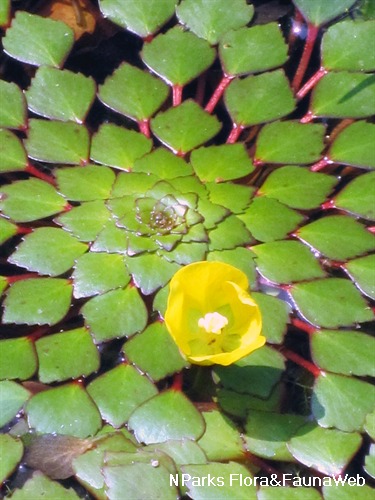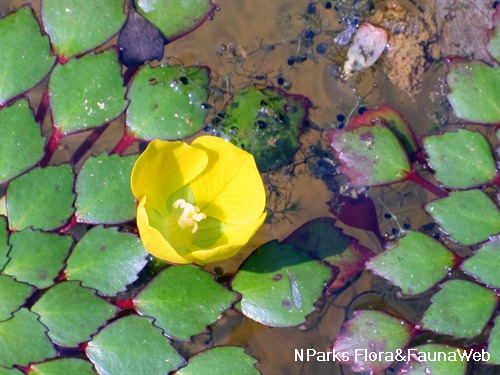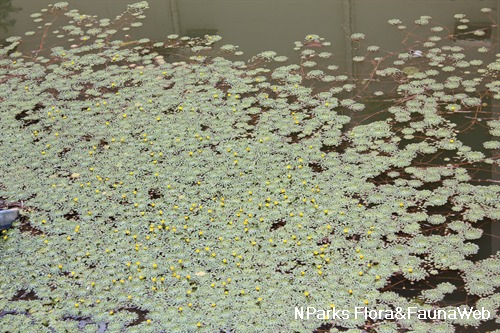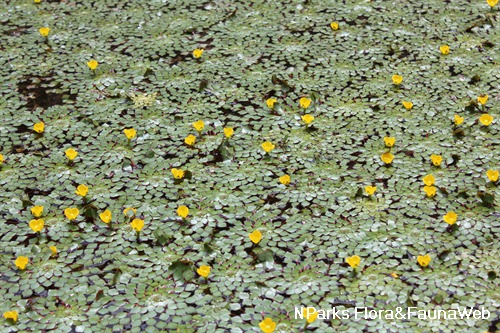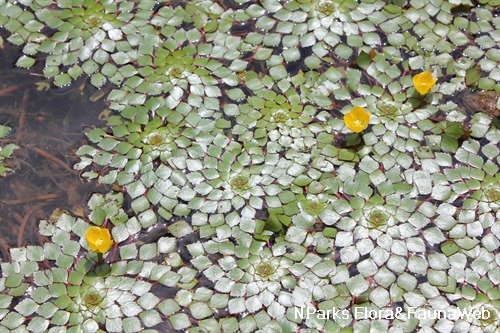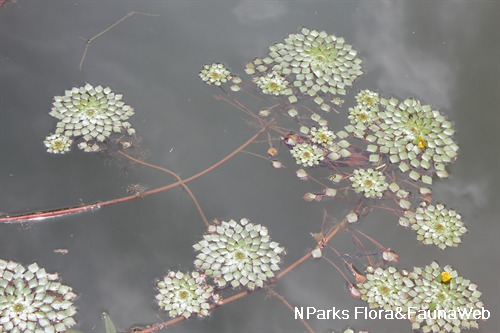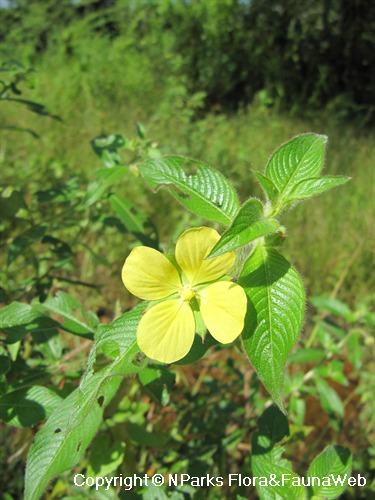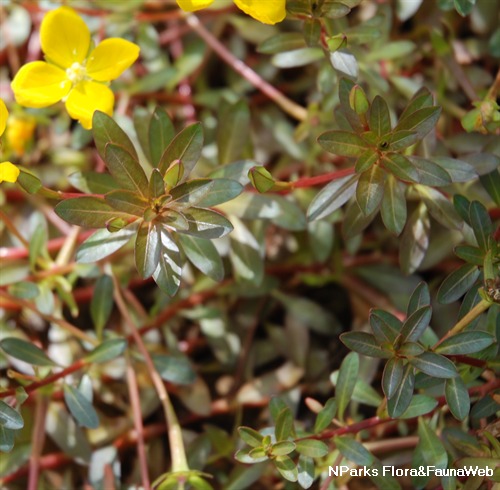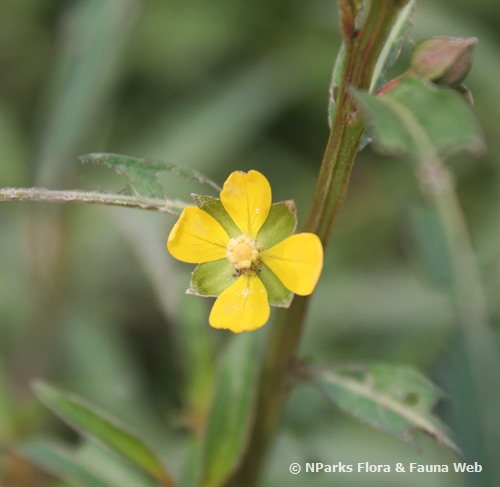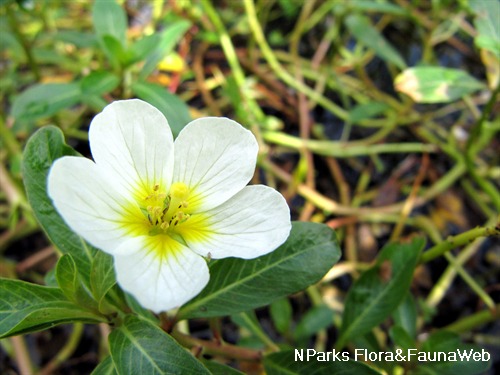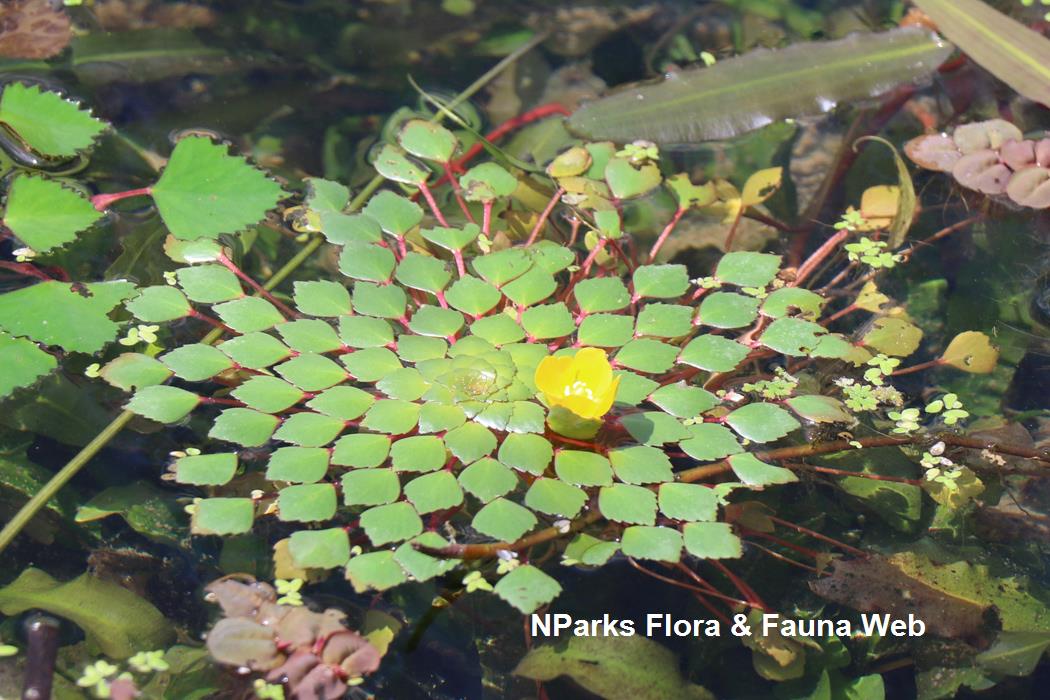
Back
Ludwigia sedioides (Humb. & Bonpl.) H.Hara
| Family Name: | Onagraceae |
| Common Name: | Mosaic Plant, False Loosestrife |
Name
Classifications and Characteristics
| Plant Division | Angiosperms (Flowering Seed Plants) (Dicotyledon) |
|---|---|
| Plant Growth Form | Aquatic & Hydrophyte (Floating Aquatic), Herbaceous Plant |
| Lifespan (in Singapore) | Perennial |
| Mode of Nutrition | Autotrophic |
| Plant Shape | Compact |
| Maximum Height | 0.2 m |
| Maximum Plant Spread / Crown Width | 0.3 m |
Biogeography
| Native Distribution | Brazil, Venezuela |
|---|---|
| Native Habitat | Terrestrial (Riverine) |
| Preferred Climate Zone | Tropical, Sub-Tropical / Monsoonal |
Description and Ethnobotany
| Others - Plant Morphology | Aquatic herbaceous shrub. Found in standing pools of water with leaves floating on surface, or growing in very swampy wet soils. Stems reddish, brittle. Leaves diamond-shaped with toothed margins, radiate outwards to form mosaic-like rosettes. Edges of central and older leaves turn bright red when plant is grown under bright light. Leaf rosettes are fully extended during daytime with gaps in between leaves. At night, the rosettes contract such that the leaves overlap one another.Flowers bright yellow, cup-shaped, solitary, produced in leaf axils from Jun to Aug in native habitats. Fruits are explosive capsules.Suitable for ponds or containers with 30-60cm depth. Plant needs to be rooted in substrate below water surface. Avoid mixing with fish, as brittle stems make plant susceptible to being torn apart by fish.Genus epithet 'Ludwigia' is named after German botanist and professor of medicine, Christian Gottlieb Ludwig (1709-1773). Ludwig corresponded with Carl Linnaeus (father of modern botanical taxonomy) about plant classifications, and Linnaeus dedicated the genus 'Ludwigia' in honor of Ludwig. Species epithet 'sedoides' means 'resembling sedum', a reference to the leaves which resemble those of certain Sedum species in terms of appearance and colour changes under strong light. |
|---|
Landscaping Features
| Desirable Plant Features | Ornamental Flowers, Ornamental Foliage |
|---|---|
| Landscape Uses | Riverine, Container Planting, Aquarium / Aquascape, Pond / Lake / River |
| Thematic Landscaping | Water Garden |
Fauna, Pollination and Dispersal
| Seed or Spore Dispersal | Abiotic (Water, Explosive Dehiscence) |
|---|
Plant Care and Propagation
| Light Preference | Semi-Shade, Full Sun |
|---|---|
| Water Preference | Lots of Water |
| Plant Growth Rate | Fast |
| Rootzone Tolerance | Waterlogged Soils, Easy to Grow |
| Propagation Method | Seed, Stem Cutting, Division |
| Maintenance Requirements Remarks | Do not grow in water bodies with fishes in it. Brittle stems easily broken up by fishes. |
| Planting Distance | 0 |
Foliar
| Foliage Retention | Evergreen |
|---|---|
| Mature Foliage Colour(s) | Green |
| Mature Foliage Texture(s) | Smooth, Glossy / Shiny |
| Foliar Type | Simple / Unifoliate |
| Foliar Arrangement Along Stem | Opposite |
| Foliar Venation | Pinnate / Net |
| Foliar Margin | Serrate / Toothed |
| Foliar Apex - Tip | Acute |
| Foliar Base | Cuneate |
| Typical Foliar Area | Microphyll ( 2.25cm2 - 20.25 cm2 ) |
Non - Foliar and Storage
| Stem Type & Modification | Herbaceous, Hollow |
|---|---|
| Root Type | Underground (Fibrous Root) |
Floral (Angiosperm)
| Flower & Plant Sexuality | Bisexual Flowers |
| Flower Colour(s) | Yellow / Golden |
|---|---|
| Flower Symmetry | Radial |
| Ovule Placentation | Axile |
| Ovary Position | Inferior / Epipgynous |
| Flowering Habit | Polycarpic |
Fruit, Seed and Spore
| Fruit Classification | Simple Fruit |
|---|---|
| Fruit Type | Dehiscent Dry Fruit , Capsule |
Image Repository
Others
| Master ID | 909 |
|---|---|
| Species ID | 2203 |
| Flora Disclaimer | The information in this website has been compiled from reliable sources, such as reference works on medicinal plants. It is not a substitute for medical advice or treatment and NParks does not purport to provide any medical advice. Readers should always consult his/her physician before using or consuming a plant for medicinal purposes. |

